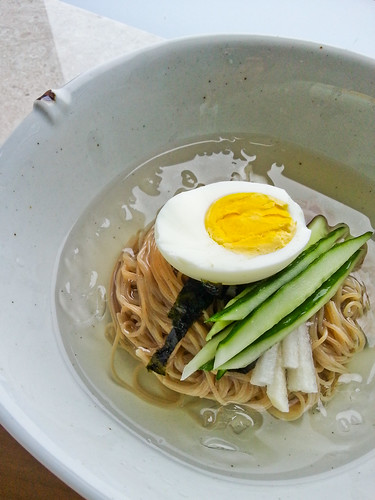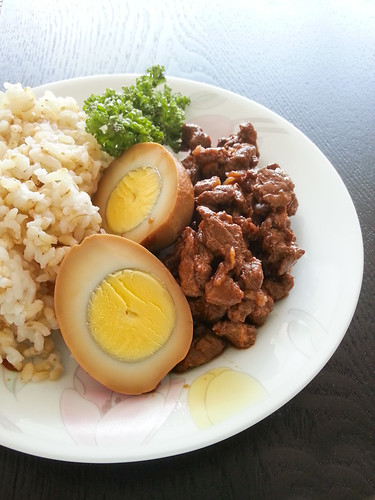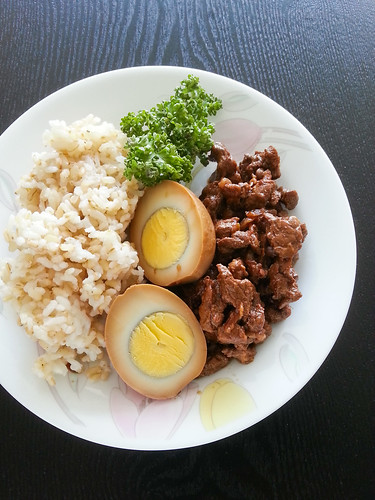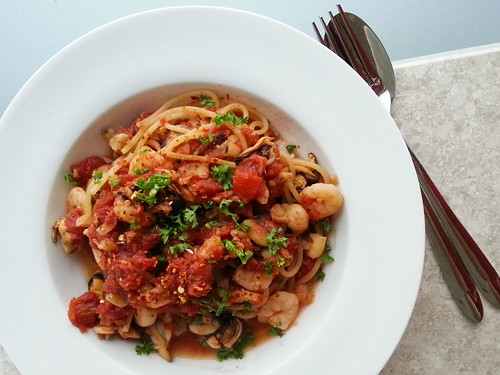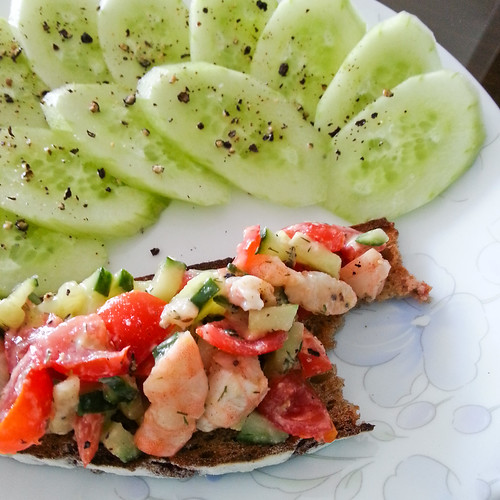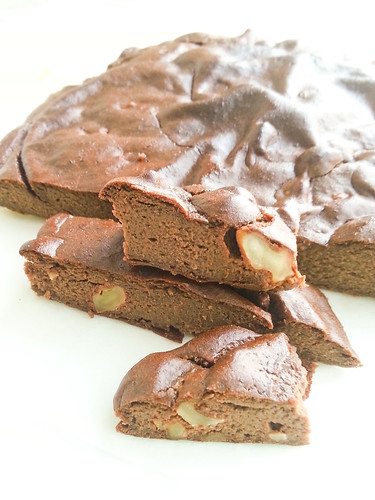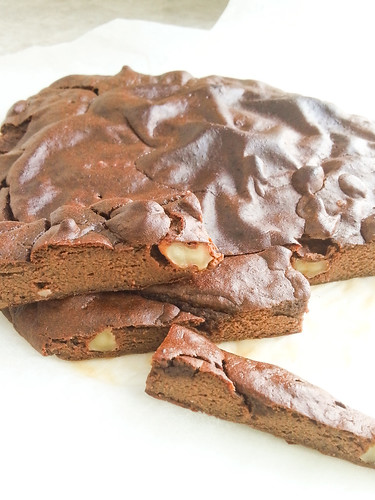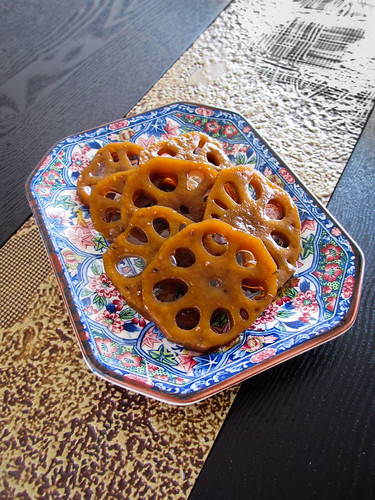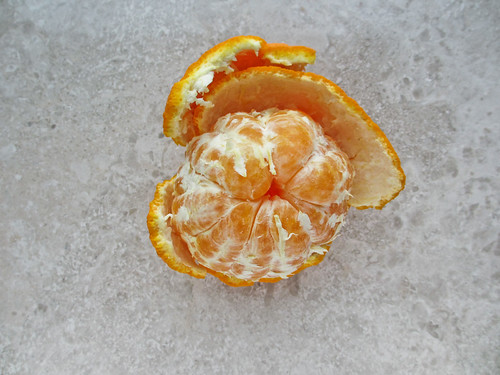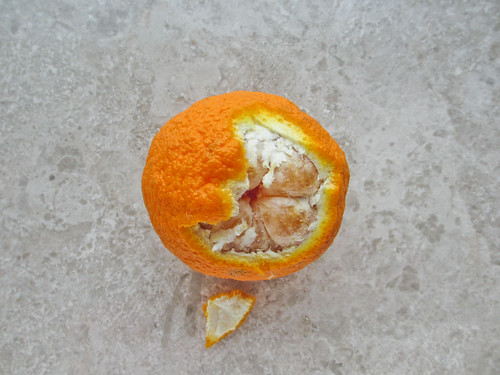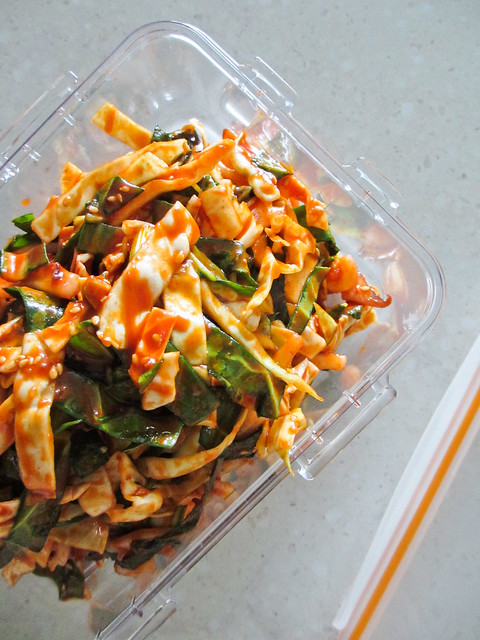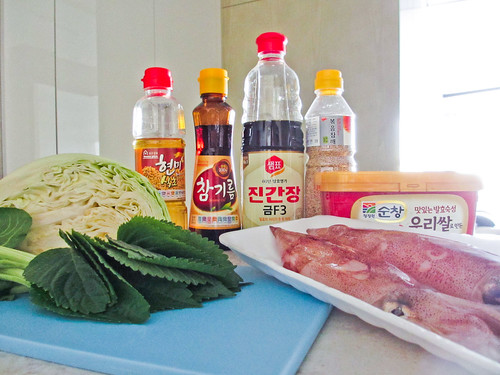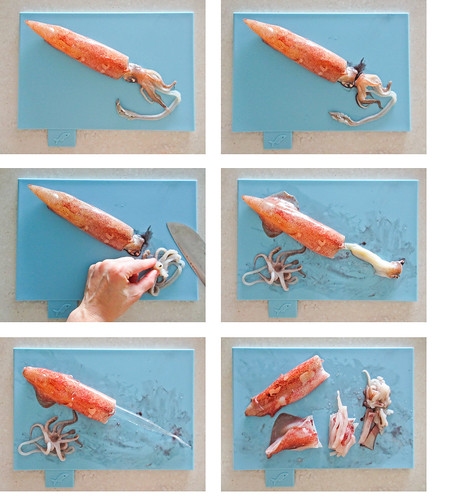Inspired by a luscious-looking cake over on Smitten Kitchen, I finally went and bought my first baking pan since moving to Korea over a year ago. Can you believe it? I haven't hardly baked in over year!
Yes, life has been busy. And ingredients and equipment have been lacking. But finally, on Thanksgiving Eve, thinking of how many of my family and friends back home are probably madly at work in their kitchens, I pulled it together and exerted a little extra work myself, celebrating (or commiserating? hehe...) with them in spirit. Starting with a dreamy-looking cake recipe, I decided to make it a bit healthier (since after all, I'll be the only one eating this over the next couple of days), and I ended up with a yummy scone-like delight that I have dubbed "Korean Sweet Potato Breakfast Bread." Thanks to the name, as well as the slimmed-down ingredients, I definitely have fewer qualms about indulging in this morning, noon, or night!
Though I don't have access to the yams and sweet potatoes that are plentiful throughout the USA, I do have the distinct pleasure of being able to buy these more petite-sized goguma (고구마), or Korean sweet potatoes, any time I want. Here in Korea, they're a beloved street snack, roasted over coals in portable ovens on the back of a mini-truck or on hand-pulled carts. They're warm and cozy treats to hold in your hands on a cold winter day, and they're delicious in texture and naturally sweet. If you've never had goguma before, I heartily recommend heading to your nearest Korean market and roasting them up for a simple, unadorned snack! (For my Santa Barbara readers, Tri County Produce was actually stocking these regularly back in 2012; anyone know if they've continued stocking them?)
This breakfast bread is quite simple to make, being that I have few fancy gadgets on hand here. You just need an oven, a baking pan, a bowl, a whisk, a spatula, a blender, and a grater, though you could use an electric hand mixer and a potato ricer, as in the Smitten Kitchen version. I also found that leaving some of the goguma roughly cubed, rather than having it all completely grated, is marvelous thing, creating soft nuggets of extra sweetness here and there in the bread.
Wishing all my US readers a very happy Thanksgiving!
Korean Sweet Potato Breakfast Bread
Inspired by Smitten Kitchen
1 ½ cups all-purpose flour
1 ¾ teaspoons baking powder
¼ teaspoon baking soda
½ teaspoon table salt
1 teaspoon ground cinnamon
¼ teaspoon ground ginger
3 small eggs
¼ cup vegetable oil
1/3 cup plain yogurt
¼ sugar
1 teaspoon vanilla extract
1 ½ packed cups cooked, grated Korean sweet potato
Sift together dry ingredients (first 6 ingredients listed) in large mixing bowl. Next, blend together the wet ingredients (eggs, oil, yogurt, sugar, vanilla) in blender until light and
frothy.
Pour the blended mixture into the dry ingredients in the large mixing bowl and crumble the grated sweet potato over. Gently mix the ingredients together with a spatula, using as
few strokes as possible to incorporate them together.
Spread batter in a 7x10-inch cake pan lined with parchment paper. Bake in a 175 C (350 F) preheated oven for about 20 to 25
minutes, until toothpick inserted comes out clean. Serve immediately. (Leftovers taste best when reheated and toasted!)





